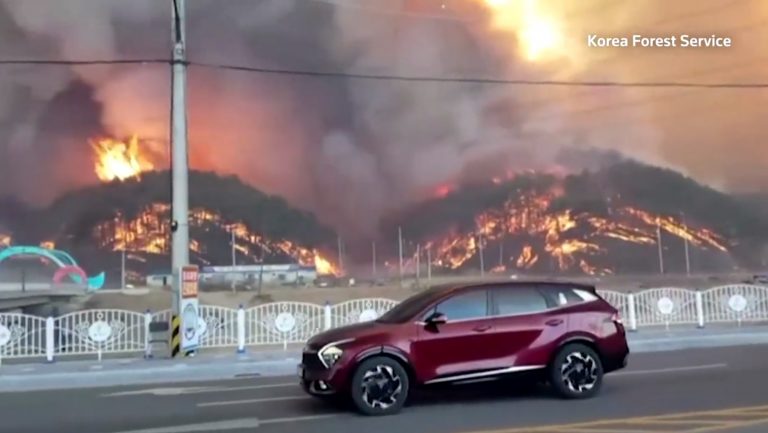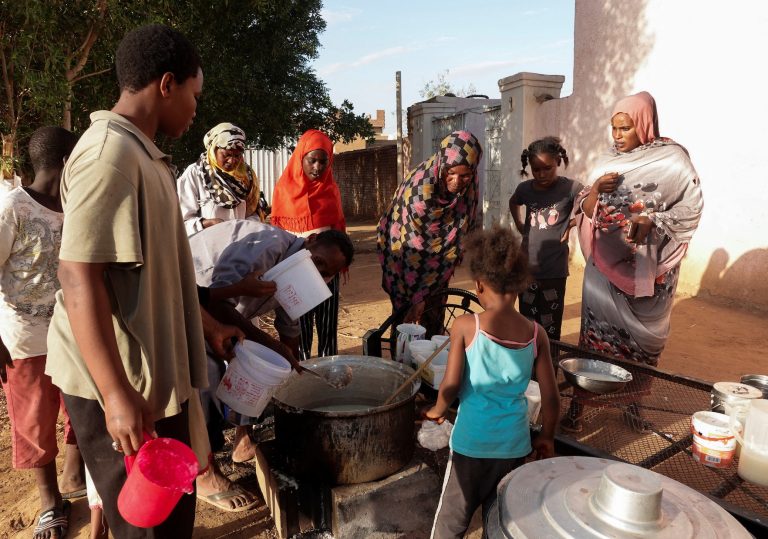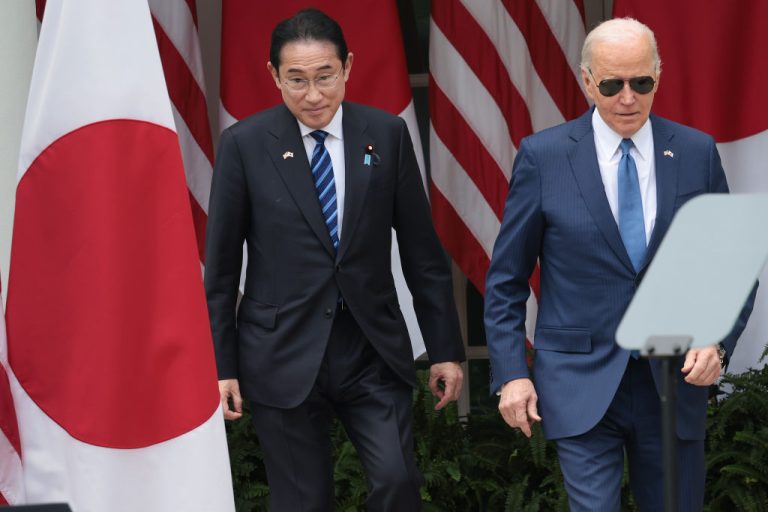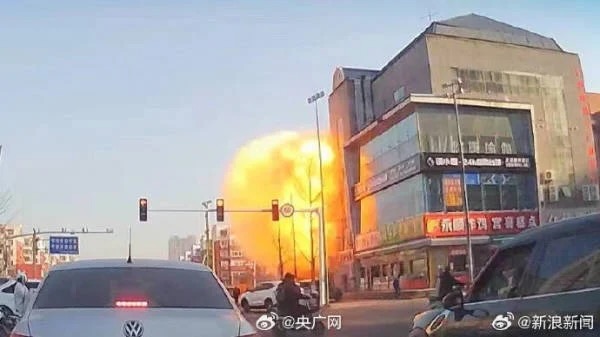The breakout of a severe wildfire has put one of the largest nuclear power plants in South Korea under threat.
Reuters reported on March 4 that a massive blaze had emerged in Uljin where Korea Hydro & Nuclear Power Co. operates a cluster of six pressurized water reactors at the Hanul Nuclear Power Plant.
The outlet reported one of the six reactors was already offline for maintenance, while a second reduced its output in light of the crisis.
According to Yonhap News Agency, the fire broke out on a road near a mountain at approximately 11:00 a.m. and had quickly spread towards the summit. Dry weather and high winds contributed to both the rapid advance of the blaze and difficulties in fighting it.
“The KFS and the National Fire Agency (NFA) issued an emergency alert and mobilized 28 fire fighting helicopters, 35 firetrucks and more than 400 firefighters to put out the blaze,” said the outlet.
Success
You are now signed up for our newsletter
Success
Check your email to complete sign up
RELATED ARTICLES:
- Biden Admin First Notified in May of Leaking Chinese Nuclear Plant Owned by Blacklisted Company
- 70-Plus Nuclear Fuel Rods at China’s Largest Reactor Taishan Damaged by Possible Design Flaws: Whistleblower
- Prominent Chinese Nuclear Scientist Found Dead After Fall From Building, Authorities Rule Out Homicide
It continued, “NFA chief Lee Heung-kyo ordered the regional fire authority of North Gyeongsang Province to make all-out efforts to prevent the fire from further spreading to the Hanul Nuclear Power Plant in Uljin, where six pressurized water reactors are located.”
Reuters reported that President Moon Jae-in also “ordered an all-out effort[s] to be made” to protect Hanul, and that “authorities have not said how far the fires are from the site of the plant.”
The Korea Times reported that the blaze had already rendered 50 homes to ashes and caused the evacuation of more than 5,000 people across Uljin and Samcheok as it scorched more than 3,300 hectares, causing 20.9 billion won ($17.9 million USD) in damages.
The publication characterized the blaze as “the largest forest area to be affected by a single wildfire in the past decade.”
According to the Times, “The fire reached the outer fences of the plant’s complex, only 11 kilometers away from the fire’s origin, but was put under control in late afternoon, firefighters said.”
However, it warned that the new threat was the fire’s advance towards the country’s largest liquified natural gas production site in Samcheok.
Sensitive timing
The timing of the blaze and the risk to a nuclear facility is sensitive as just hours prior, a battle between the Russian Federation and Ukraine at the Zaporizhzhia nuclear plant, Europe’s largest nuclear production site, led to several ancillary fires at facilities surrounding the facility’s reactors.
During the siege, Ukraine President Volodymyr Zelensky hyperbolically accused Russia of conducting a “nuclear terror attack,” according to CNN.
Zelensky made the comments in a Facebook post, according to the outlet, where he also claimed, “Russian tanks are shooting at the atomic blocks equipped with thermal imagers. They know what they are shooting at. They’ve been preparing for this (attack).”
Rhetoric ran high as the leader drew comparisons to the Chernobyl disaster, “For all Ukrainians, for all Europeans, for all people who know the word ‘Chernobyl,’ how many victims there were.
Even the U.S. Embassy in Kiev added fuel to the fire in a March 4 Twitter post when it issued the hot take, “It is a war crime to attack a nuclear power plant. Putin’s shelling of Europe’s largest nuclear plant takes his reign of terror one step further.”
But the tweet was something of a loss of face for both Washington and Kiev.
Only a few hours later, CNN White House correspondent Natasha Bertrand revealed Washington stepped in to force a retraction, “The State Department sent an urgent message to all US embassies in Europe telling them not to retweet the below tweet from the US Embassy in Kyiv, per @kylieatwood…’If you have retweeted it – un-retweet it ASAP,’ said the message, reviewed by CNN.”
Russia seized control of the plant during the battle, which according to many experts was never at risk of reactor damage due to the location of the fighting and the plant’s robust engineering.
A March 4 release by the International Atomic Energy Agency stated that Zaporizhzhia “continued to be operated by its regular staff and there had been no release of radioactive material” while under control of the Russian Federation.
The Agency characterized the actual damage and fighting in a markedly different light than Zelensky: “A projectile overnight had hit a training building in the vicinity of one of the plant’s reactor units, causing a localized fire that was later extinguished.”
















